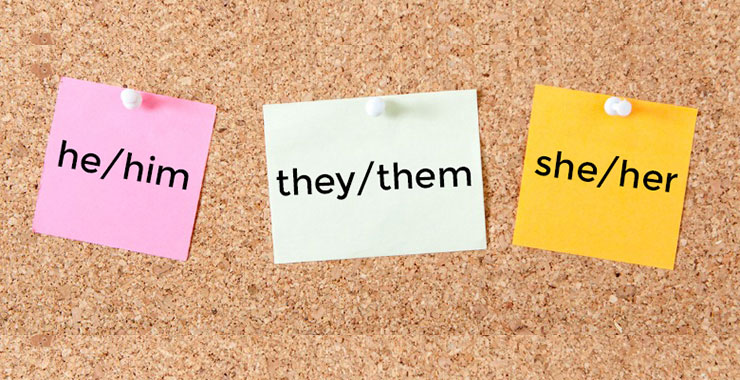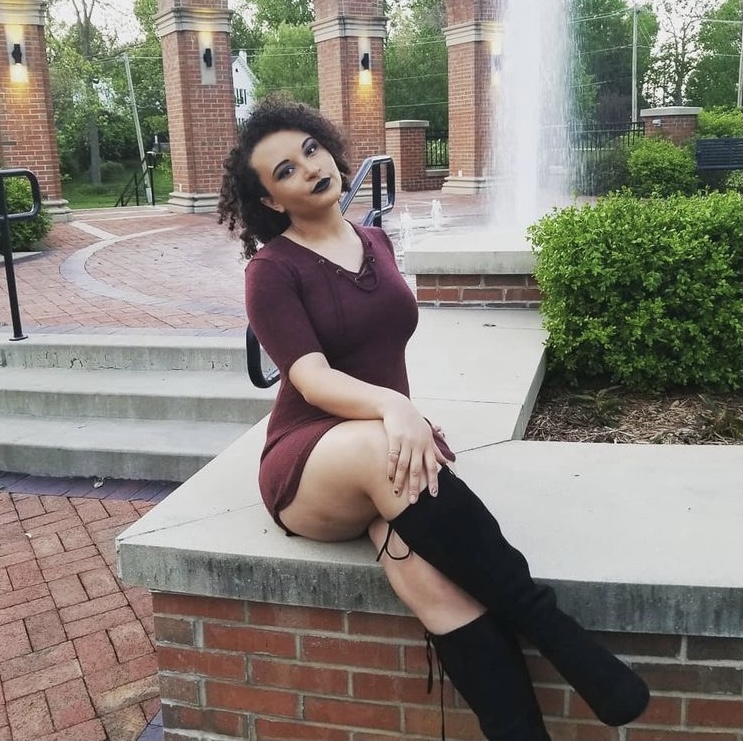By Haley Rey, Associate Editor
Photos from Isa Scaturro, Aliyah Smith, and apastyle.apa.org
Nonbinary identification is widely becoming more well known and accepted, but it is still on the rise as far as the general public’s overall understanding and respect of it. According to VerywellMind, “Nonbinary gender identity is just one term used to describe individuals who may experience a gender identity that is neither exclusively woman or man or is between or beyond both genders. Nonbinary individuals may identify as genderfluid, agender (without gender), genderqueer, or something else entirely.”

Most nonbinary individuals prefer the pronouns “they/them,” since these pronouns are neutral and do not immediately determine a specific gender or identity. As a society, most of us are accustomed to exclusively using “she/her” and “he/his” because until recently, nonbinary identification and preferences were not as accepted. It also sounds a bit off to some people to use the terms “they” and “them” when referring to a singular person and not a group of people. However, this singular “they” is a part of the APA style of writing.
According to the American Psychological Association website, “Experts in sexual orientation and gender diversity crafted APA’s bias-free language guidelines for writing about gender, including the guidance on a singular ‘they.’” You can learn more about these guidelines here.
Aliyah Smith, a McKendree alumnus that now teaches high school, identifies as nonbinary and prefers the pronouns “they/them.” I asked them what it’s like to identify as nonbinary now that it’s more accepted, and if people often mess up their pronouns. They explained, “Oh, for sure! I feel like being nonbinary is more accepted, but there are definitely people (even in the LGBT+ community) who say you’re being extra or just wanting more attention, so I still find myself keeping my pronouns to myself around those I think are going to give me trouble about it. But overall, those who are close to me get them right. My high school students are, for the most part, really good at it and ask a lot of questions. I have some that will get my pronouns or someone else in the classroom’s pronouns wrong just to make them upset, but I think having a nonbinary teacher has opened a lot of their eyes, and they’re a little more sensitive to others’ pronouns.”

So, now that we’ve heard what it’s like to be misidentified, how can we support and respect our nonbinary peers? Isa Scaturro, also a McKendree alumnus, prefers “she/her” but has several friends that identify as nonbinary. Unfortunately, our society is not as comfortable using “they/them” singularly, but Isa is determined to become more familiar with these pronouns for the sake of respecting her friends and anyone else that identifies as nonbinary.
Her solution was to apply this identification to her brand new houseplant. Similar to how people name their stuffed animals, cars, and other meaningful possessions, Isa named her houseplant Drax after the Marvel galaxy guardian. And just as cars and ships are often referred to with “she/her” pronouns, Isa decided that her houseplant would identify as nonbinary. She created an environment to practice the usage of “they/them” wherein if she messed up, she would not be hurting anyone’s feelings or accidentally disrespecting them.
“I struggle with ensuring that I give my nonbinary friends the respect they deserve by using their correct pronouns,” Isa said. “So I decided to use my plant as a way to help myself remember it. I named them Drax because they have similar colors to Drax from ‘Guardians of the Galaxy.’ It has definitely helped me a lot because I have not messed up as much with my friends’ pronouns as I used to. I still have some hiccups but it helps me with reminders on whether or not I’m using them properly.”
This isn’t meant to objectify nonbinary people, either. Plants are living things, but that’s beside the point; Isa made use of the human tendency to create identities for inhuman items in a way that will now help her better respect the people around her.

I asked Aliyah about their thoughts regarding Isa’s pronoun-practicing strategy. They replied, “That’s adorable. I think if it helps you get used to using gender-neutral pronouns then it can’t hurt! I started calling everyone ‘they’ until I learned their pronouns, especially with strangers.”
So if you still feel slightly uncomfortable using “they/them” and you’re worried about messing up in front of someone that prefers those pronouns, find a way to practice! As Aliyah mentioned, another way to get used to these terms is to simply use “they/them” as a default for everyone until you learn their pronouns; they are neutral, after all—why aren’t they our default already? Lastly, it’s important to normalize the sharing of preferred pronouns across all platforms. Start putting your pronouns in your social media bios, at the end of your email signatures, on your business cards—anywhere you can think of to let other people know your preference. This will also help nonbinary people feel less secluded in doing so.
At the end of the day, remind yourself of this quote from Chris Voss: “Don’t treat others the way you want to be treated; treat them the way they need to be treated.” Happy practicing!
*Works discussed in this article include verywellmind.com, apastyle.apa.org, and Never Split the Difference: Negotiating as if your life depended on it by Chris Voss (with Tahl Raz)
This story really gets to the root of a societal change and plants the seed to grow the discussion (insert groan emoji here). The quote at the end sums up everything perfectly!
This is great! Most people in the English/writing world, too, are getting on board with singular “they,” including the MLA. Hooray for nonbinary plants!
thats awesome